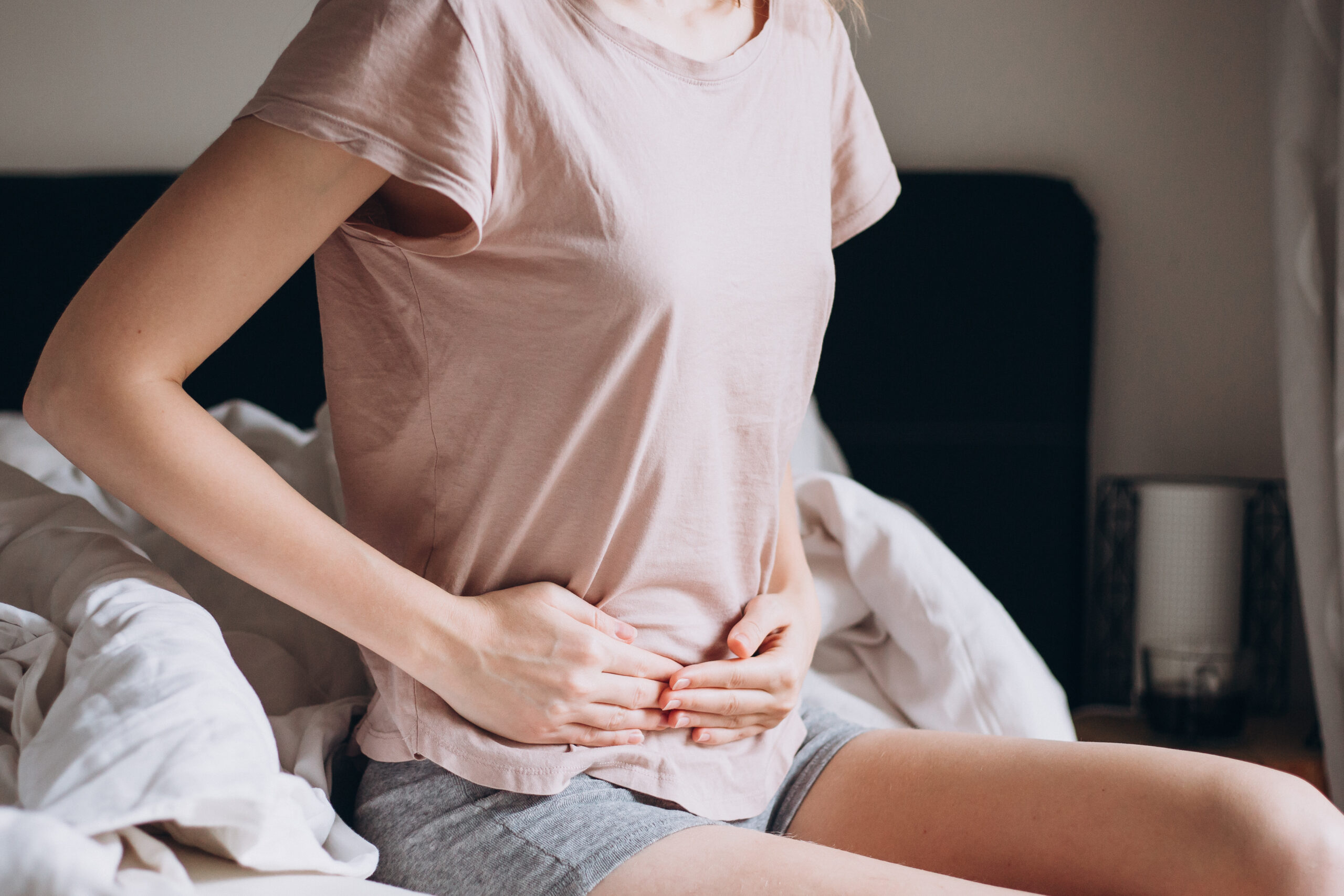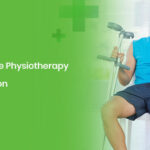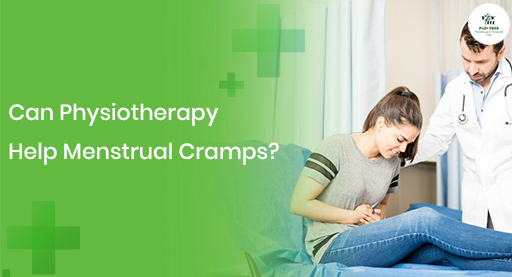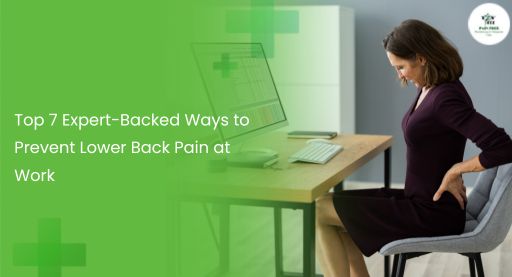Can Physiotherapy Help Menstrual Cramps?
Experiencing menstrual cramps, medically known as dysmenorrhea, can be one of the worst feelings in the entire month. Period cramps can sometimes ruin your day or even the entire week. You might not be able to perform your daily chores as planned. Instead, you often find yourself lying down on the bed because your period cramps hurt too much!
Undoubtedly, you might have tried several methods to eliminate this painful feeling that accompanies your periods. But have you tried physiotherapy to relieve your menstrual cramps?
Several women opt for physio treatments to lessen the effect of menstrual cramps. However, many women doubt the efficacy of physiotherapy in providing you benefits during your periods.
Here, we will discuss if you should opt for physiotherapy to help your menstrual cramps.
What Are Menstrual Cramps?

During periods, some women experience extreme pain in their abdomen and lower back. This pain is usually referred to as menstrual cramps. These cramps occur because of the contraction of uterine muscles during menstruation. The contraction supports the expelling of the uterine lining. So, it leads to extreme pain for some women.
Period cramps can cause mild discomfort to you. However, some women experience debilitating pain that impacts their daily activities and overall well-being.
Types Of Menstrual Cramps
Usually, two kinds of menstrual cramps might occur during your periods.
- Primary Dysmenorrhea
Primary dysmenorrhea refers to menstrual cramps that occur without any underlying medical conditions. These cramps typically occur in younger women, often starting within a few years of their first menstrual period. The pain associated with primary dysmenorrhea usually begins just before or at the onset of menstruation. It might last for one to three days.
- Secondary Dysmenorrhea
Secondary dysmenorrhea is the menstrual cramps that occur because of underlying medical conditions. In some women, conditions such as endometriosis or fibroids are common. The development of secondary dysmenorrhea is common in such women. Such kinds of menstrual cramps may develop later in life and can worsen over time.
Physiotherapy For Menstrual Cramps
Physiotherapy, or physical therapy, is a non-invasive treatment approach. It focuses on restoring, maintaining, and promoting your overall physical health. Physiotherapy involves several techniques and exercises that help you enhance your mobility, reduce pain, and enhance your body’s physical functions.
Over the recent years, physiotherapy has proved to be of great help for women experiencing period cramps. This treatment works wonders in alleviating pain because it targets those muscles and tissues that are under stress during your menstruation cycle.
The Role Of Physiotherapy In Alleviating Menstrual Pain
Physiotherapy treatments and movements can alleviate period cramps and also improve your mobility. It focuses on improving your pelvic health. Menstrual cramps can be mild or very severe. It is easy to manage some pain and discomfort in the pelvic area. However, severe menstrual pain can interfere with your daily functioning.
Physiotherapy plays a great role in helping you lessen the impact of menstrual cramps. Let’s take a look at some of the benefits of going for physiotherapy sessions for managing period pain.
1. Strengthening and Conditioning
A physiotherapist makes specific exercises a part of your menstrual cycle routine. These exercises help in strengthening and conditioning the muscles of the pelvic floor and abdomen. Strengthening these muscles can help provide better support to the pelvic organs.
When your pelvic organs get the necessary support, you can witness a reduction in the intensity of menstrual cramps. A physiotherapist would recommend some pelvic floor exercises to improve your pelvic muscle strength and coordination.
2. Improving Pelvic Mobility
Certain physiotherapy techniques focus on improving pelvic mobility and flexibility, which can help reduce muscle tension and alleviate menstrual pain. Stretching exercises, gentle yoga poses, and manual therapy techniques can help release tight muscles and improve the range of motion in the pelvic region, promoting relaxation and comfort during menstruation.
3. Enhances Circulation
To lessen the impact of the menstrual cramps, there should be appropriate blood circulation in your body. Physiotherapy uses techniques such as massage and manual therapy. Massage and manual therapy can help improve blood circulation to the pelvic organs and the uterus.
Improved blood flow can reduce inflammation. It helps in promoting tissue healing and alleviating menstrual pain. Massage and manual therapy can provide oxygen and nutrients to the affected area.
Common Physiotherapy Techniques For Managing Menstrual Cramps
Physiotherapy includes a range of exercises to relieve your period cramps. Apart from regular massage and manual therapies, a physiotherapist might recommend the following exercises to reduce period cramps.
1. Pelvic Floor Exercises
Pelvic floor exercises focus on strengthening the muscles of the pelvic floor. These are also known as Kegels. You can perform Kegels by contracting the muscles used to stop the flow of urine mid-stream. Hold the contraction in the muscles for a few seconds, then release. Repeat this process several times. You can aim for three sets of 10-15 repetitions each day.
Strengthening the pelvic floor muscles can help improve your pelvic stability and reduce the severity of muscle cramps during periods.
2. Deep Breathing Exercises
Deep breathing exercises help promote relaxation and reduce stress. Stress can significantly contribute to easing period cramps. To practice deep breathing, you can sit or lie down comfortably. Close your eyes and take slow deep breaths in through your nose.
While breathing in, allow your abdomen to rise and then, exhale slowly through your mouth. Focus on fully relaxing your body. You can practice deep breathing for a few minutes several times a day, especially during menstruation. It can prove beneficial in getting rid of period cramps.
3. Cat-Cow Stretch
The cat-cow stretch is a yoga pose that helps stretch and mobilize the muscles of the spine. This yoga pose can also relax your abdomen and pelvis. Start on your hands and knees, with your wrists directly under your shoulders and your knees under your hips.
Inhale as you arch your back and drop your belly towards the floor. Lift your head and tailbone towards the ceiling (cow pose). Exhale as you round your spine tuck your chin to your chest and pull your belly button towards your spine (cat pose) when you exhale. Repeat this sequence several times, moving slowly and gently to avoid strain.
4. Child’s Pose
The child’s pose is another yoga pose that the physiotherapist might recommend to alleviate the menstrual cramps. A child’s pose can help you feel relaxed by relieving the tension in the pelvic area and reducing period cramps. Begin the pose on your hands and knees and then sit back on your heels.
Lower your forehead to the floor and extend your arms forward. Hold this position for several deep breaths. Allow your body to relax and your pelvic muscles to release tension. The child’s pose can provide a gentle stretch to the lower back and hips. So, it can help ease menstrual discomfort.
5. Supine Twist
The supine twist is a gentle spinal twist that can help alleviate tension in the lower back and pelvis. Lie on your back with your knees bent and feet flat on the floor. Extend your arms out to the sides in a T position. Inhale, then exhale as you lower both knees to one side.
Keep your shoulders grounded on the floor. Hold this twist for a few breaths. Then, return to the center and repeat on the other side. The supine twist helps release tension in the pelvic muscles and improve circulation. It promotes a proper blood flow in the body which eases your period cramps.
6. Heat Therapy
Heat therapy is a simple yet effective method for relieving menstrual cramps. By applying warmth to the abdominal and pelvic regions, you can ease the symptoms of period cramps. Heat therapy can offer immediate relief by leveraging the physiological benefits of heat on muscle relaxation.
This technique can also help in improving blood circulation in your body. Heat therapy promotes vasodilation. It helps in the widening of blood vessels in response to heat. As a result, more blood flows to the abdominal and pelvic areas. The affected tissues and muscles get more oxygen and nutrients.
Heat therapy can also stimulate sensory receptors in the skin. So, it delivers a pain-relieving effect. The warmth from heat therapy provides a comforting sensation that distracts you from menstrual pain. As a result, your period cramps can become more manageable.
How To Manage Menstrual Cramps?
Apart from going for physiotherapy sessions, there are several other ways in which you can manage your menstrual cramps. For example, staying hydrated will ensure that there is proper blood circulation in your body. You should also engage in gentle exercises during your periods. Also, make sure to manage a few stress management techniques so that you can take your mind off the pain.
Conclusion
Physiotherapy is a promising approach to managing the menstrual cramps. A physiotherapist can help you relieve muscle tension and improve circulation in your body. Physiotherapy helps in promoting your pelvic health. With its focus on non-invasive techniques and personalized treatment plans, this treatment can provide much-needed relief to women experiencing menstrual discomfort.
So, if you undergo extreme menstrual cramps and unbearable pain during your periods, you can opt for physiotherapy. Physiotherapy treatments can help in reducing your symptoms and help you enjoy a better quality of life.











